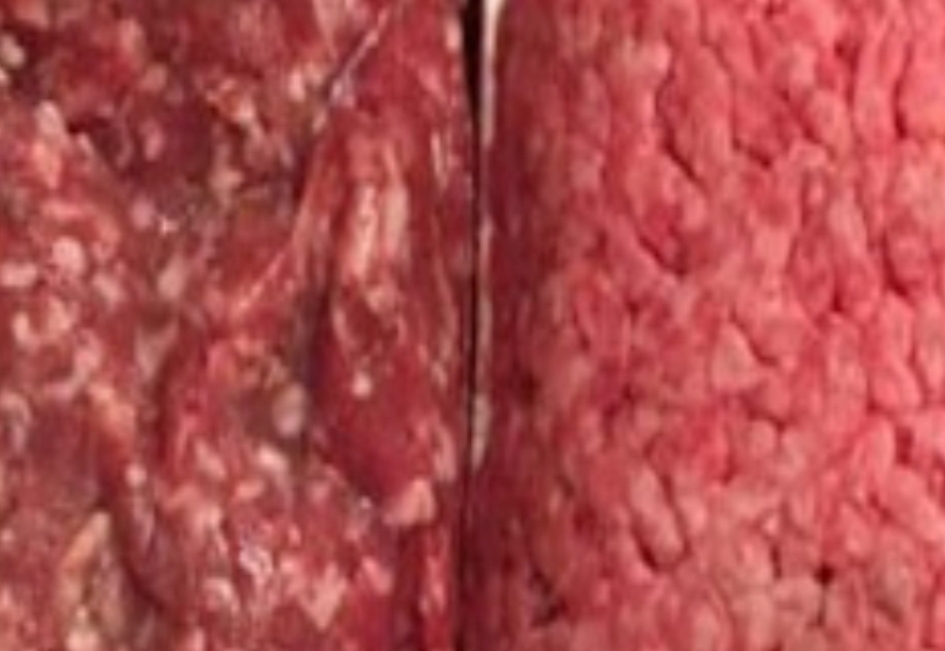When it comes to buying ground beef, not all meat is created equal—and this picture is a perfect reminder of that. On the left, you see a rich, deep red ground beef likely sourced from a butcher shop or freshly ground. On the right, a paler, almost pink ground meat, mass-packaged in a foam tray, possibly from a large commercial grocery chain. At a glance, they might look similar to the untrained eye, but there are big differences that every shopper should be aware of.
The Appearance Tells a Story
The darker color of the beef on the left suggests it hasn’t been exposed to as much oxygen or preservatives, and it may have a higher fat content, often indicating fresher, less processed meat. The beef on the right, though brighter in color, is not necessarily fresher. In fact, that bright pink hue is often due to carbon monoxide packaging or other gas treatments used to keep the meat looking fresh longer. And if you look closely at the bottom of the right package, there’s a grayish-brown spot—likely a sign of oxidation, which happens when meat is aging or hasn’t been stored properly.
Quality Over Convenience
Many shoppers grab the neatly packaged meat in foam trays without thinking twice, but that convenience often comes at the expense of quality. Mass-produced meat may include additives, be ground from various cuts, or even come from multiple animals. On the other hand, butcher-ground meat is typically made from a single cut, often with no fillers or extras—just pure beef.
What to Look For
- Color: Fresh ground beef should be a cherry red on the outside, but don’t panic if it’s a bit brown inside—oxygen exposure affects color. What you don’t want is a funky gray or greenish tint, especially paired with a sour smell.
- Texture: High-quality ground beef is coarser and denser. The overly uniform, soft texture of some commercial meat can be a sign of over-processing.
- Smell: Trust your nose. Meat should smell clean and meaty, never sour or metallic.
- Source: When possible, buy from local butchers or trusted suppliers who grind meat fresh daily. Ask what cuts they use—it’s your right as a consumer!
Why It Matters
Aside from the flavor and texture differences, there’s a health component. Lower-quality meats may contain more fat, gristle, or even preservatives that you may prefer to avoid. Choosing higher-quality beef might cost a bit more, but it pays off in better taste, nutrition, and peace of mind.
Final Thought
Next time you’re shopping for ground beef, take a moment to really see what you’re buying. It might look like just another pound of meat, but there’s a big difference between mystery meat and quality ground beef. Don’t let flashy packaging or bright colors fool you—know what you’re feeding your family.
